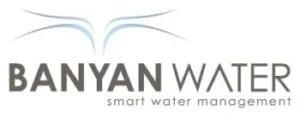 Water leak prevention keeps expenses under control
Water leak prevention keeps expenses under control
It’s 8 p.m. Tuesday and you just got a call about standing water right outside your building. It appears to be coming from the building, or maybe from underground. It’s hard to say.
You spend the next few hours calling emergency plumbers, trying to find the source of the water. Meanwhile, you’ve driven to the site and have discovered that wherever the water is coming from, there’s a lot of it inside as well. The flooring is wet, the drywall is wet, and there is still standing water outside.
You spend the next several days coordinating emergency repairs and several weeks and thousands of dollars fixing the building itself. A month later, you get a water bill that is $7000 more than your usual bill because, of course, this leak existed for weeks without you knowing about it. Now, imagine a scenario focused on water leak prevention.
Instead of the above emergency, wasted water and loss of money, that same leak was detected within hours of starting. Your smart water management system sent you an email saying that Building 3 showed an unusual spike in water use within about an hour of it starting. While it still disrupted your day, you were able to fix the leak within a few hours, and cleanup was minimal since the leak hadn’t gotten out of hand. You didn’t get that drastically increased water bill, you didn’t waste tremendous amounts of water, and you prevented much of the possible property damage.
Water Leak Prevention Saves Costs
Both of these scenarios are everyday realities for property and facilities managers. Leaks on large properties are inevitable and can be extremely costly. Zurich insurance, in fact, states that water damage is a leading cause of commercial property loss from a frequency/severity standpoint. What often starts out as a small, undetected leak can quickly spread through a building and cause structural, operational, reputational and financial losses.
Unfortunately, as the financial costs of a leak add up, so do the environmental ones. While many regions of the country are in severe drought, leaks remain a major cause of water loss throughout the United States. According to the EPA, over 1 trillion gallons of water per year are lost to leaks. That’s equivalent to the annual water use of 11 million homes.
Information is Key to Prevention
While leaks often feel out of control or unpredictable, Zurich reports that about 60% of the claims they see for water damage were preventable. A little proactivity leading to a water leak prevention can go a long way.
In order to position yourself to catch a leak early and minimize risk, you need to increase your visibility into your water use. The story above about a property manager who was immediately notified about a leak is a true story about a Banyan Water client who uses a non-invasive flow monitoring system to obtain data on their water use. This visibility saved the client from a disaster on their property and gives them ongoing peace of mind that their water system is functioning properly. There are various ways to increase your visibility and minimize your risks. These range from regular, manual checks all the way to advanced software solutions.
Actions to Stay Informed & Ahead of Leaks
– Regularly monitor your water bills and look for variances. Even small leaks can waste thousands of gallons per month — so if you have a new leak, you will likely see a spike that you can’t explain. Some quick comparisons to previous year’s use (which many utilities will actually show on your bill) could reveal an underground leak that needs attention.
– Irrigation systems are notorious for leaks because they’re vulnerable to myriad dangers, from severe weather to lawn mowers. If you’re not already doing so, you or your landscaper should walk through your property every month, turning on each set of sprinklers as you go, to see if there are any broken heads or sprinklers that are misaligned.
– Knowledge is power. Any data that you can obtain on your water use is going to reveal problems faster. In the stories that opened this post, I mentioned a smart water management system that notified a property manager within hours (or minutes) of a leak starting. Flow monitoring systems like the one made by Banyan Water can detect anomalies in water usage immediately, minimizing the time it takes to shut off water and stop damage.
– If you have a property that should not be using water at a certain time of day or night, take a look at your water meters before and after. If the meter shows use when the property is completely shut down, there is likely a leak somewhere.
– The EPA regularly highlights solutions and partners who can help you to save water through leak avoidance or other methods. Take a look at their WaterSense website for more information.
Proactive management and regular monitoring of your water use can help you catch leaks early and avoid the headaches, costs, and wasted resources associated with a major water damage incident.

